We are temporarily not accepting orders from Canada due to the Canada Post strike.
Nous n’acceptons temporairement pas de commandes en provenance du Canada en raison de la grève de Canada Post.
We are temporarily not accepting orders from Canada due to the Canada Post strike.
Nous n’acceptons temporairement pas de commandes en provenance du Canada en raison de la grève de Canada Post.

Renalgan tablets 20 pieces
$17.46
Renalgan relieves pain and spasms in the stomach, intestines, kidneys, biliary tract, and menstrual cramps with analgesic and antispasmodic effects.
Pharmacological properties
Pharmacodynamics. Renalgan is a combined drug that has analgesic and antispasmodic properties. The drug contains three active ingredients: non-narcotic analgesic metamizole sodium (analgin), myotropic antispasmodic pitofenone hydrochloride and anticholinergic fenpiverinium bromide. Metamizole is a pyrazolone derivative. It has analgesic, antipyretic and weak anti-inflammatory effects. Pitofenone, like papaverine, has a direct myotropic effect on the smooth muscles of internal organs and causes their relaxation. Fenpiverinium, due to its anticholinergic effect, has an additional antispasmodic effect on smooth muscles.
Pharmacokinetics. When administered intramuscularly, it is rapidly absorbed. Metamizole has a systemic bioavailability of approximately 85%. Metamizole binds to plasma proteins by 50-60%. Penetrates the blood-brain barrier and the placental barrier. The volume of distribution is about 0.7 l/kg of body weight. Metamizole undergoes intensive biotransformation in the liver, and its main metabolites are pharmacologically active. C max in blood plasma (relative to all metabolites) is established after approximately 30-90 min. It is excreted by the kidneys in the form of metabolites, with only 3% of the allocated amount of metamizole excreted unchanged. T ½ – about 10 h.
Indication
Symptomatic treatment of pain syndrome in case of spasm of smooth muscles of internal organs: gastric and intestinal colic; renal colic in urolithiasis; spastic dyskinesia of the biliary tract; dysmenorrhea.
Application
Renalgan solution for injection should be used only intramuscularly.
In / m, administer 2-5 ml of solution for injection. If necessary, repeat the injection after 6-8 hours. The maximum daily dose should not exceed 10 ml of solution for injection (equivalent to 5 g of metamizole sodium). Duration of treatment – 2-3 days. After achieving a therapeutic effect, you can switch to treatment with analgesics and antispasmodics for oral administration. In the absence of a therapeutic effect, therapy should be discontinued.
Renalgan tablets. A single dose for adults and children over 15 years of age is 1-2 tablets (preferably after meals). Up to 3 doses can be taken per day. If necessary, repeated administration is recommended after 6-8 hours. The daily dose should not exceed 6 tablets. The use of the drug in tablet form is recommended as an additional treatment after the introduction of the injectable form (no more than 5 days).
For children aged 12-15 years, a single dose is ½-1 tablet. A single dose can be administered up to 3 times a day.
Contraindication
Hypersensitivity to the components of the drug, pyrazolone derivatives (phenylbutazone, tribuzone) or other nonsteroidal anti-inflammatory drugs. severe hepatic or renal failure, megacolon, acute hepatic porphyria, suspected surgical pathology, prostate adenoma of the II and III degree, congenital deficiency of glucose-6-phosphate dehydrogenase, tachyarrhythmia, angle-closure glaucoma, prostatic hypertrophy with a tendency to urinary retention, gastrointestinal obstruction (including mechanical obstruction), atony of the gallbladder or bladder, disorders of the hematopoietic system (agranulocytosis, leukopenia, aplastic anemia), collaptoid state, decompensated heart failure, BA, hemolytic anemia.
Side effects
Allergic reactions: skin rash, urticaria (including on the conjunctiva and nasopharyngeal mucosa), itching, rarely – angioedema, anaphylactic shock, in isolated cases – toxic epidermal necrolysis (Lyell’s syndrome), Stevens-Johnson syndrome, hemorrhages.
Gastrointestinal tract: discomfort, burning in the epigastric region, dry mouth, constipation, exacerbation of gastritis and stomach ulcers.
From the side of the central nervous system: headache, dizziness.
On the part of the organ of vision: visual disturbances, accommodation disorders.
From the cardiovascular system: arterial hypotension, tachycardia, heart rhythm disturbances.
On the part of the blood system: anemia, granulocytopenia, leukopenia, thrombocytopenia, agranulocytosis (may manifest itself as the following symptoms: unexplained increase in body temperature, chills, sore throat, stomatitis, development of vaginitis or proctitis).
Respiratory system: bronchospasm.
On the part of the urinary system: renal dysfunction, oliguria, anuria, proteinuria, urine staining in red, interstitial nephritis, urinary retention, difficulty urinating, acute renal failure, polyuria.
Other: decreased sweating.
Local reactions: infiltrates at the injection site.
Special instructions
When treating with Renalgan, there is a risk of developing anaphylactic reactions. At the first signs of hypersensitivity, the administration of the drug should be stopped immediately and urgent measures should be taken to relieve the condition (adrenaline, glucocorticoids, antihistamines).
The risk of developing hypersensitivity reactions is increased in individuals with food and drug hypersensitivity or atopic diseases (hay fever, asthma).
When treating with metamizole, there is a risk of agranulocytosis. The development of agranulocytosis is not dose-dependent and cannot be predicted. It can develop after the first dose or after repeated use. When treating patients with hematological diseases or with a history of them with Renalgan, it is necessary to assess the risk/benefit ratio and monitor the hematological status during therapy.
In case of kidney and liver diseases, the dosage regimen should be selected individually due to possible side effects of metamizole on the kidneys and prolongation of T ½ of metamizole metabolites in case of impaired hepatocyte function.
The drug should be used with caution in patients with obstructive diseases of the digestive tract (achalasia, pyloroduodenal stenosis). Repeated use of Renalgan in these cases can cause retention of gastrointestinal contents and intoxication. The use of Renalgan in patients with gastroesophageal reflux disease, intestinal atony, paralytic ileus, glaucoma, myasthenia gravis, heart diseases (arrhythmia, ischemic heart disease, congestive heart failure) requires special caution and monitoring by a doctor.
Use with caution in the treatment of patients with systolic blood pressure of 100 mm Hg. Caution should be exercised when administering 2 ml of solution (risk of a sharp decrease in blood pressure).
Use during pregnancy and breastfeeding. The drug is not used during pregnancy and breastfeeding.
Children. The drug in solution form is not used in children under 15 years of age, in tablet form – under 12 years of age.
Ability to influence the reaction rate when driving vehicles or working with other mechanisms. Due to the possibility of adverse reactions from the nervous system (dizziness, accommodation disorders), you should refrain from driving vehicles or working with other mechanisms that require a high reaction rate.
Interactions
Combining with other drugs requires special caution due to the content of metamizole, which is an enzyme inducer.
When using the drug, alcohol consumption should be avoided, as there is a possibility of mutual potentiation of the effect.
The use of Renalgan in combination with other non-narcotic analgesics may lead to mutual enhancement of the severity of side effects.
Tricyclic antidepressants, contraceptives, allopurinol slow down the metabolism of metamizole in the liver and increase its toxicity.
Enzyme inducers (barbiturates, phenylbutazone, glutethimide and other inducers of liver microsomal enzymes) weaken the effect of metamizole.
Sedatives and tranquilizers enhance the analgesic effect of Renalgan.
With simultaneous use of Renalgan with quinine preparations, an increase in the anticholinergic effect is possible.
Renalgan reduces the concentration of cyclosporine in the blood plasma. If necessary, the simultaneous use of the above and other drugs should consult a doctor. Histamine H 2 receptor antagonists, codeine and propranolol, when used simultaneously, enhance the effect of metamizole sodium.
Sarcolysin and mercazolil increase the risk of leukopenia.
Metamizole sodium increases the hypoglycemic activity of oral antidiabetic agents.
With simultaneous use, metamizole may reduce the activity of coumarin anticoagulants as a result of enzyme induction.
With the simultaneous use of chlorpromazine and other phenothiazine derivatives with metamizole, there is a risk of severe hypothermia.
With the simultaneous use of chloramphenicol and other myelotoxic agents with metamizole, there is an increased risk of bone marrow suppression.
Metamizole significantly increases the C max value of chloroquine in blood plasma.
Concomitant use with other analgesics and NSAIDs increases the risk of hypersensitivity reactions and other adverse reactions.
Renalgan can be combined with hyoscine butylbromide, furosemide, and glibenclamide.
Radiocontrast agents, colloidal blood substitutes, and penicillin should not be used during treatment with metamizole.
Incompatibility. The administration of Renalgan solution with other drugs in the same syringe is unacceptable.
Overdose
Symptoms. In case of overdose, symptoms of metamizole intoxication in combination with anticholinergic effects prevail. Most often, toxic-allergic syndrome, symptoms of damage to the hematopoietic organs, gastrointestinal disorders are noted, in severe cases, symptoms of brain damage are observed. Vomiting, dry mouth, nausea, epigastric pain, decreased sweating, accommodation disorders, arterial hypotension, drowsiness, confusion, impaired liver and kidney function, convulsions are possible.
Treatment. If an overdose is suspected, the drug should be immediately discontinued and measures should be taken to rapidly remove it from the body (forced diuresis, administration of water-salt solutions, if necessary – hemodialysis, peritoneal dialysis). Therapy is symptomatic. There is no specific antidote.
Storage conditions
Solution – in the original packaging at a temperature not exceeding 25 °C; tablets – in a place protected from light at a temperature of 8-15 °C.

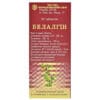
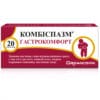
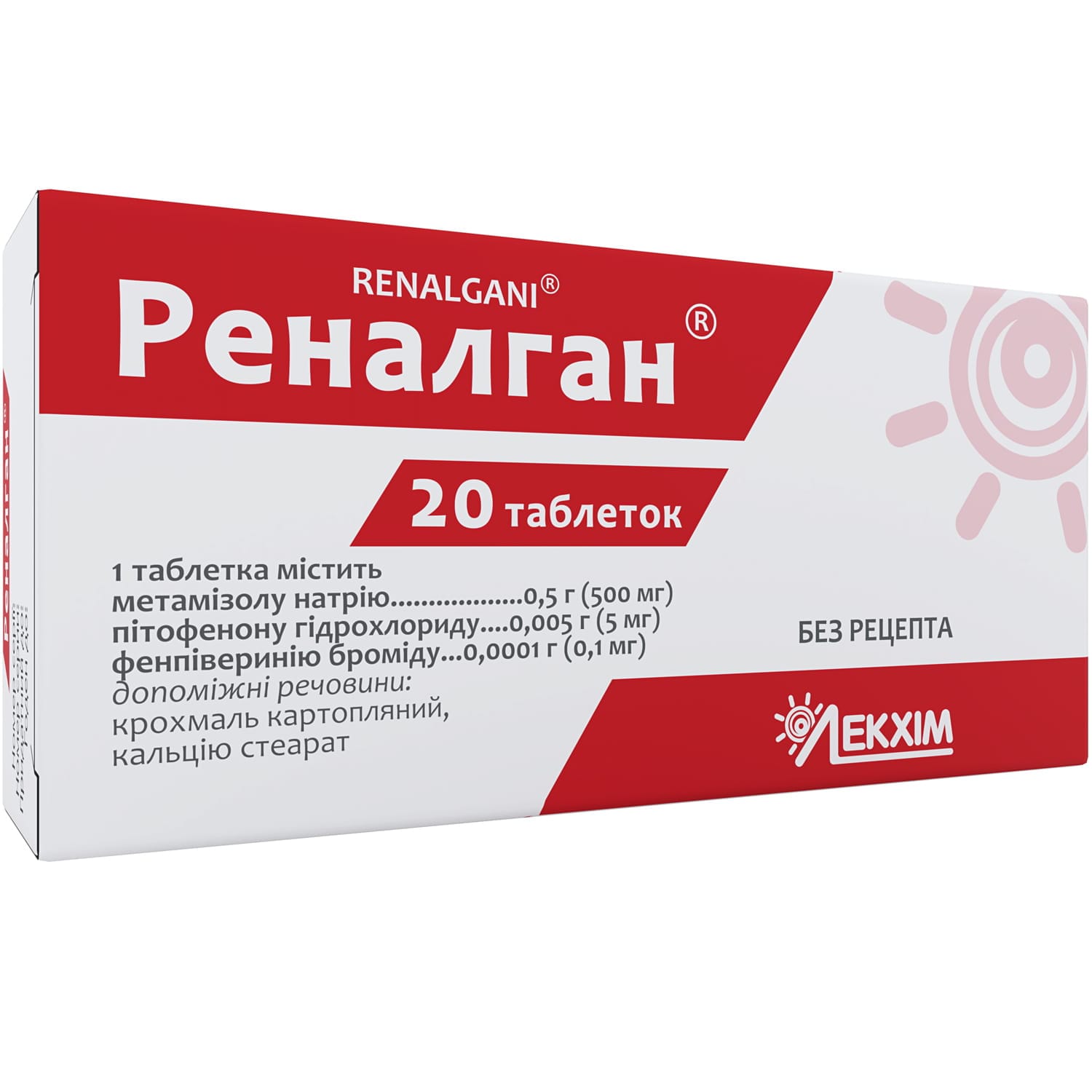
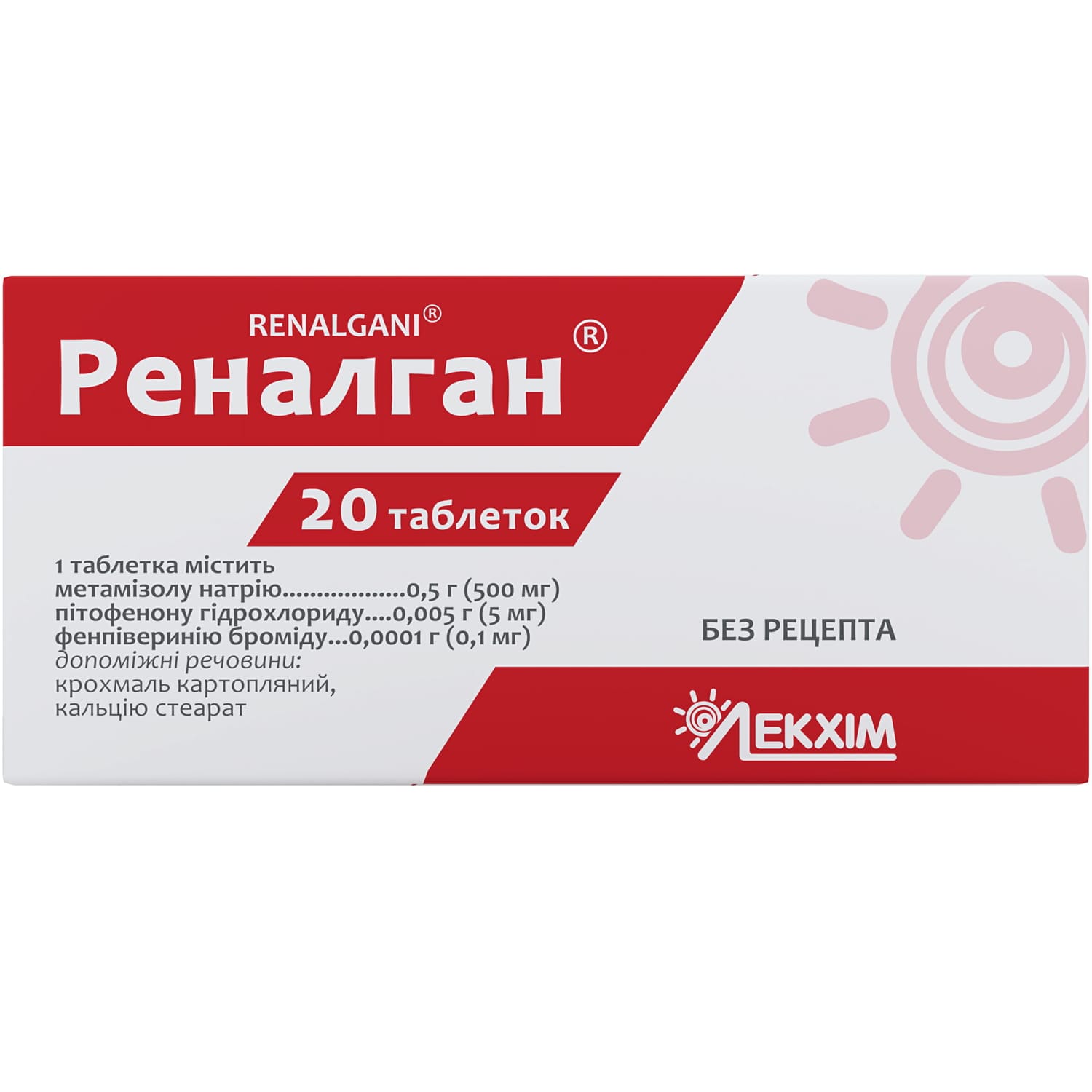
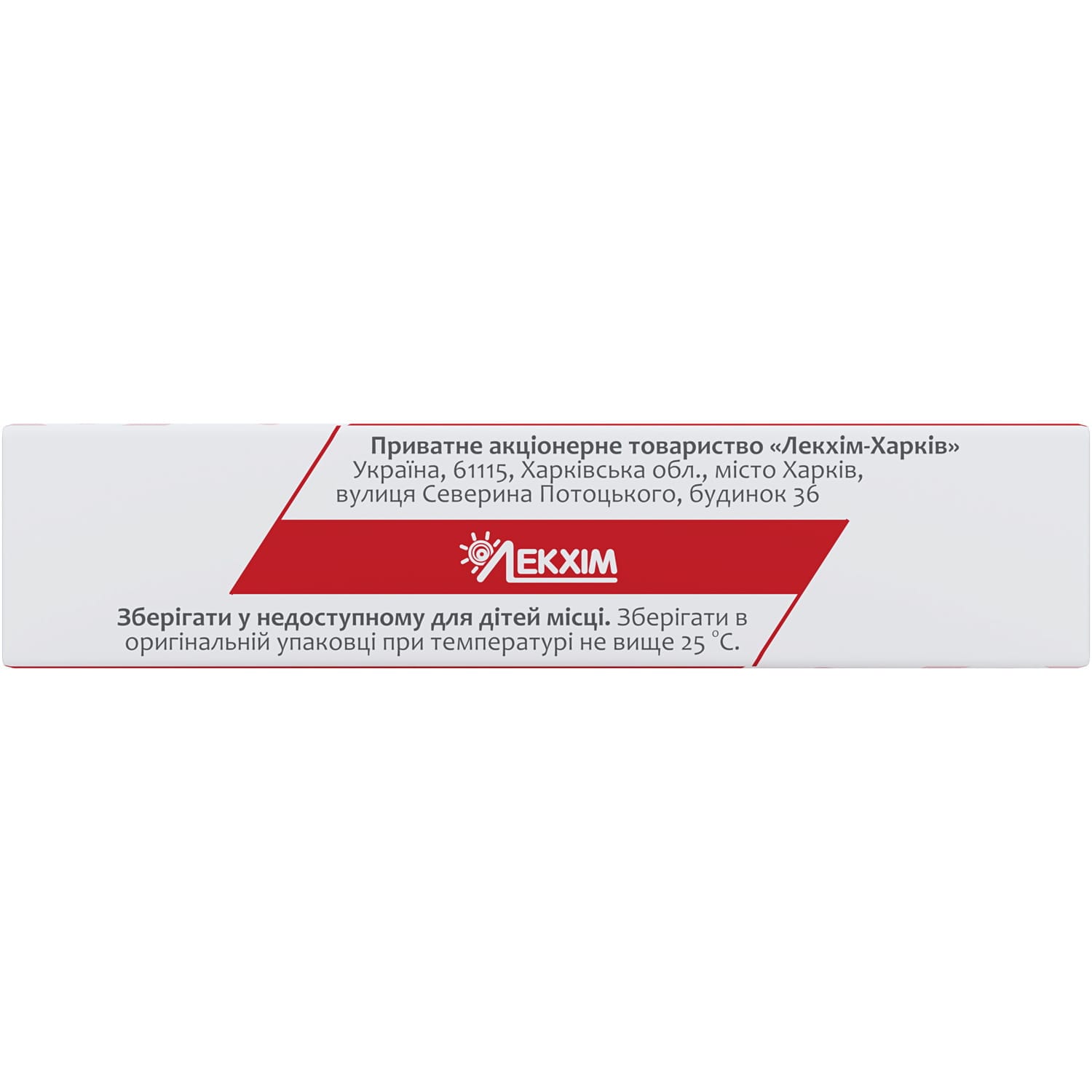

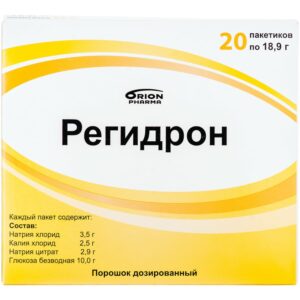
Reviews
There are no reviews yet.